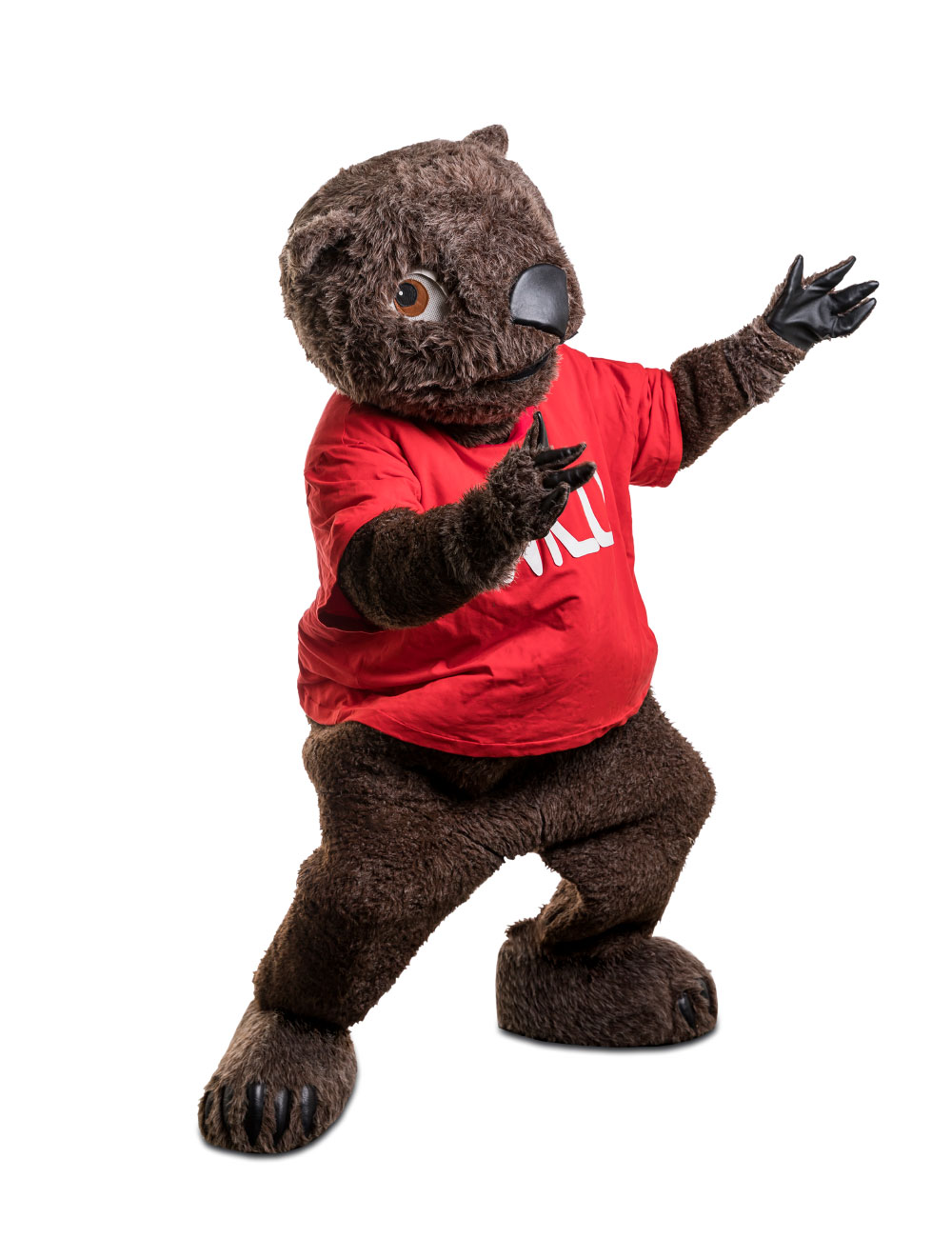Willy is a wombat who loves to sleep a lot, but when we wake him up he loves to do his dance, go on bush walks, play on swings and keep fit.

WILLY’S SONGS
Wake up Willy Wombat
Willy Wombat has slept in and the audience wants to see him dance and twist his way through his fun little rock song, but everyone soon finds out that merely yelling out “Wake Up Willy” won’t be enough to get him up. But after we learn a little more about our fury friend he is soon up and strutting his stuff on the dance floor and letting us know all about his secrets to a happy and healthy life.
Whistling Willy Wombat
Well what do you know; just when Wozza and the kids think they are going to struggle to wake Willy Wombat again there he is, right behind them, whistling away like the happiest, liveliest wombat in the world. And you know something; maybe he ‘is’ the happiest, liveliest wombat in the world because he loves life, getting up early, keeping incredibly fit, healthy and happy and doing all sorts of exciting things with his friends.
Wombat Facts
The wombat has the distinction of being the world’s largest burrowing animal. It is the second largest marsupial; only certain kangaroo species are larger.
The wombat lives in hilly forest country and it likes to burrow underground. A wombat burrow can be as long as 20 metres. Wombats quickly dig complicated tunnels with their strong legs and sharp claws, and then they push loosened soil away with their hind feet.
Wombats live alone in their burrows, but other wombats may be in a tunnel close by, or sometimes burrows can interconnect. Wombats are very shy animals. Wombats usually rest in or near their burrows during the day and come out at night to eat.
Wombats have long claws that are adapted for digging, and they live in burrows, from which they emerge at night to feed on grasses and other plants. The teeth of wombats are of continuous growth, and, a single pair of chisel like incisors is found in each jaw. Young Wombats are born singly and each is carried in its mother’s pouch.
By day wombats sleep in a burrow. Although mostly solitary, wombats often share burrows.
At night wombats feed on coarse grasses, leaves, herbs and roots.
The entrance to the female Wombat’s pouch faces backwards. This is to prevent dirt from entering it when it is burrowing.
The wombat is nocturnal, which means it is active at night, eating grasses, roots and shrubs. It stays in its cool burrow in the daytime, though sometimes can be seen basking in the sun at the burrow entrance.
The wombat marks its territory by leaving droppings (called scats) on logs and rocks. Wombat scats, or poo, is slightly cubed so that it doesn’t roll off rocks and logs.
Common wombats are not endangered, although their habitat is decreasing. The southern hairy-nosed wombat is listed as Vulnerable. The northern hairy-nosed wombat is listed as Critically Endangered.
They have all suffered from loss of habitat and competition from introduced animals such as cattle, sheep and rabbits.
This is a Wombat in the wild…

And this is Willy the Wombat from the Magical Mountains!
